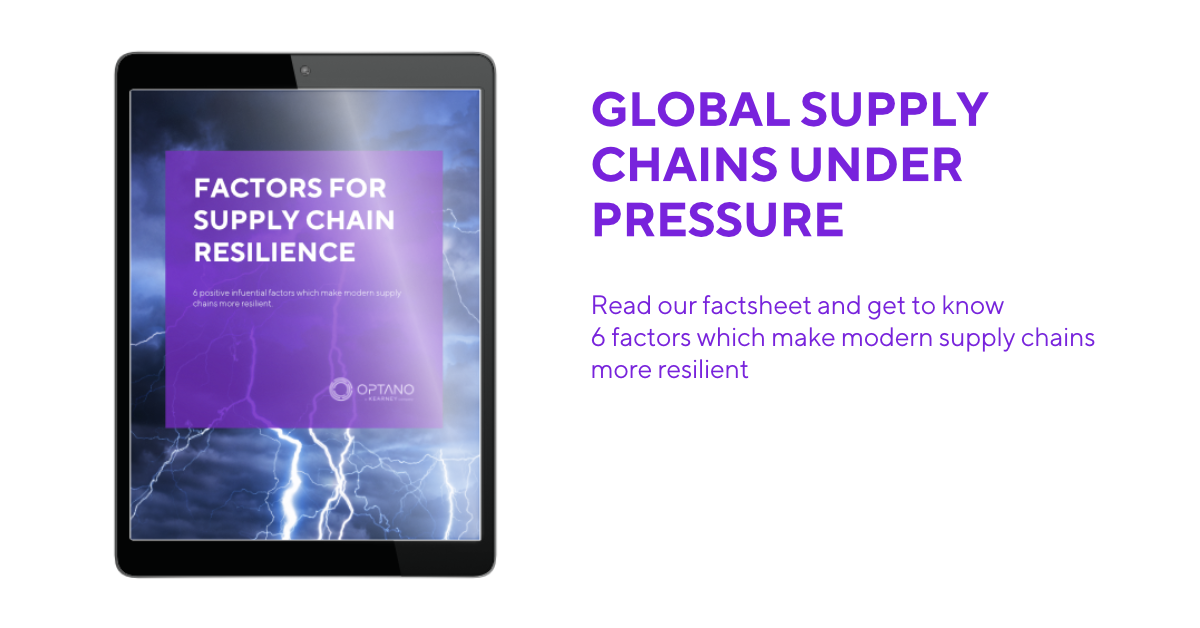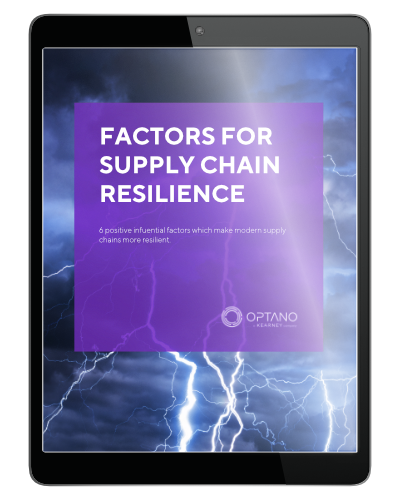Protecting the supply chain from climate change
The number of extreme weather events has increased significantly in recent years. Climate change not only affects nature and people, but also has a significant impact on shipping. Whether it’s low water caused by heat and lack of rain, as in the summer of 2022, or extremely high water levels with extensive flooding, inland shipping is coming to a standstill. This has serious consequences for the economy as a whole, as rivers continue to be important transport routes for raw materials and goods.
Climate change is not only affecting the waterways. Other areas of the supply chain are also feeling the impact. In our article Supply chain resilience: Here to stay, we explained how new uncertainities can be managed with
transparency, risk analyses and other alternatives. In this article, we will focus on the latter, namely the alternatives: what adjustments can be made to supply chains to ensure they remain as resilient as possible?
Be proactive: Find the alternatives
What options are there?
Once the supply chain has the necessary transparency and its vulnerabilities have been identified, the best available alternatives have to be found. But what appropriate alternatives are there? Which adjustments can be made to the supply chain to be better prepared in case of a delivery failure, for example? Let us take a look at the most relevant options:
Supplier diversification strategy
Diversification is more important than ever for today’s supply chains. Companies that align their buying strategy with this can manage the risks in their supply chain much more effectively and cushion the effects of non-delivery or delivery delays. Therefore, it makes sense not to just place your bets on one regular supplier but to choose several suppliers from as many different regions as possible or which have different delivery routes. This is essential to prevent one extreme weather phenomenon affecting several suppliers all at the same time.
Choosing a supplier with the shortest possible delivery route (so-called near-shoring) can also be an alternative since short delivery routes do not pose as large a risk as those that are very long and international.
Diversification of means of transport and routes
Transport routes can be severely impaired by floods, heavy rain or droughts. Companies whose main focus is on the transport route in their supply chains will feel the adverse effects if this route cannot be used for any reason. This risk can be reduced by having alternative transport routes to fall back on. Planning alternative means of transport for routes which are considered high-risk can also contribute to supply chain security.
Increasing storage capacity
Storing raw materials and intermediate products takes up space and costs money. In the last few years, the goal of many companies was to have as little storage space as they could and plan just-in-time deliveries whenever possible. In times of supply chain uncertainty this type of planning poses a major risk. Companies which are always dependent on new deliveries for their current production have to deal with production downtime if delivery is delayed or cannot be performed. Large storage capacity can lessen the impact of such failures. Especially for production-relevant goods and raw materials as well as hgh-risk transport routes, larger storage capacity can lower the risk of any failure.
Switiching to insourcing
Which intermediate goods need to be manufactured by external manufacturers and which of t can be produced at the company (again)? This is a classic make-or-buy decision. In-house production bears fewer risks and can be managed and controlled better, thus increasing your supply chain security. However, in many cases there are good reasons to outsource production and these aspects should be calculated exactly and considered well since this is a strategic decision with far-reaching effects.
Securing electricity supplies
When we think of supply chains we usually think of tangible goods which are transported from one location to another. Yet electricity is also a product that the vast majority of companies depend upon. Climate change could have a serious impact on the supply of electricity and a power outage caused by storm damage is also conceivable. It may be wise, therefore, to ensure your energy supplies are available in an emergency by producing your own self-produced power . Installing your own electricity (e.g. with photo-voltaic plants) can make your company less dependent on external factors.
Securing the water supply
A reliable water supply is also essential for many companies and can be jeopardized by extreme weather conditions. Increasing the water efficiency can make a good contribution here. Establishing in-house retention basins can ensure your company has a sufficient supply of water.
More interesting articles
How can we maintain an overview ?
A brief recap
As we can see, there are ways and means of securing one’s supply chain against external influences. However, these possibilities also bring countless other alternatives which have to be considered and reviewed in order to make a sound decision. Let us sum up the adjustments that can be made which we mentioned above:
- The choice of supplier
- The choice of the transport means and route
- Adjusting the storage capacity
- Switching to insourcing
- Alternative electricity supply
- Alternative water supply
For each of these aspects there are many variations which first need to be reviewed. Behind some of these are strategic decisions which have far-reaching consequences and large investments behind others.
Deploying Prescriptive Analytics can help to manage this task. Firstly, the routes which are most likely to be jeopardized and areas which require particular protection can be identified using Machine Learning methods based on real data from the past. For these, the optimal trade-off between cost-efficiency and security based on the possible alternatives can be calculated.
Secondly, using what-if scenarios provides more added value. How will the supply chain be affected if a supplier or transport route is changed? What costs would be involved? What would happen if a company increased storage space at its own expense? Would insourcing be a better option for certain products? Based on current business data the consequences of the various possibilities can be calculated and compared.
Find the best alternatives with OPTANO
With OPTANO we have created an innovative solution which enables us to select the best alternative from all the options. All of the relevant factors of your supply chain are mapped in a mathematical model. On this basis and on that of the goals you have set, the best solution can be determined.
For strategic decisions OPTANO provides what-if scenarios and the opportunity to compare the results of the different scenarios. In this way, the consequences of your decisions can be considered from every angle in advance. Thus, your decisions are based on proven figures and calculations.
If this has piqued your interest or you have any questions on how OPTANO can be implemented in your company,then don’t hesitate to contact us. Alternately you can also download our factsheet on this topic.
Have you got your factsheet on this topic yet?

What are the factors which contribute towards a resilient supply chain? These are outlined in our factsheet.
To obtain our factsheet, all you need to do is enter your contact details in the space below. A pop-up window will then open to download the whitepaper. Please note that by providing us with your email address, you agree that we may contact you on this topic. You may revoke this agreement at any time by contacting [email protected].








